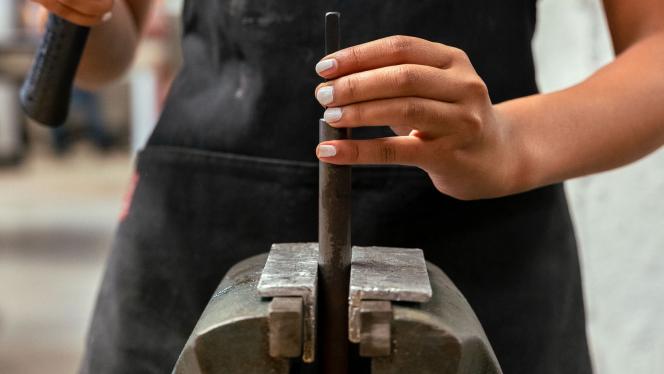Larry Sears is still building—and having fun
When students enter the Larry Sears and Sally Zlotnick Sears think[box], they might find one of its namesakes at a workbench, soldering or swapping ideas with fellow makers.
“You learn by watching what other people are doing,” said Larry Sears (CIT ’69), who holds or co-holds nearly 20 patents. “I still do.”
A longtime Case Western Reserve University trustee and former adjunct professor of electrical engineering, Sears is a steady presence in the innovation center he helped bring to life.
Last year, for example, he helped start CWRU’s thinkSTEM, a summer day camp for middle-schoolers, introducing them to engineering. And last spring, he competed alongside students in the inaugural think[box] Derby with his own entry: a fan-powered car that started at the finish line and raced backward up the track.
“That’s what engineers do—figure out problems. And if they don’t have a problem to solve, they usually make one up themselves.”
—Larry Sears
His belief in hands-on learning goes back to his undergraduate days at Case Institute of Technology, when he held campus lab jobs working in electronics that provided foundational learning opportunities essential to his eventual success.
After graduation, Sears founded Hexagram Inc. and eventually developed wireless systems that allowed utilities to read gas, water and electric meters remotely—technology that helped usher in what is now known as smart metering.
“My real-world experience as an undergraduate was invaluable,” he said. “And I wanted to make sure that others had the same opportunity. Even if students were not fortunate enough to have the deep laboratory experiences that I had, I wanted to acquaint them with real-world design, engineering and manufacturing; engineers should understand how things are made.”
That belief became the foundation for Sears think[box].
After Hexagram’s sale in 2006, Larry Sears and his wife, Sally Zlotnick Sears (FSM ’72, LYS ’74), gave $6 million to create the Sears Undergraduate Design Lab. In 2012, they committed $5 million for think[box], then a small, new campus makerspace. They later gave another $5 million for the current space, a seven-story innovation center renamed in their honor.
In 2005, Larry Sears also began educating CWRU undergraduates, blending theory with practice as they designed, built and tested projects in “Applied Circuit Design,” which students often described as the “hardest and best” course they ever took.
In 2020, he earned a CWRU award for teaching excellence. “This sounds corny, but ‘Larry Lab’ changed my life,” one former student said at the time.
Thousands more—students, tinkerers and entrepreneurs—have been shaped by his teaching and the space he helped make possible.

Ten years ago, Case Western Reserve University’s makerspace opened its new seven-story home with a bold mission: to make innovation radically accessible to everyone.
Photograph by Matt Shiffler

